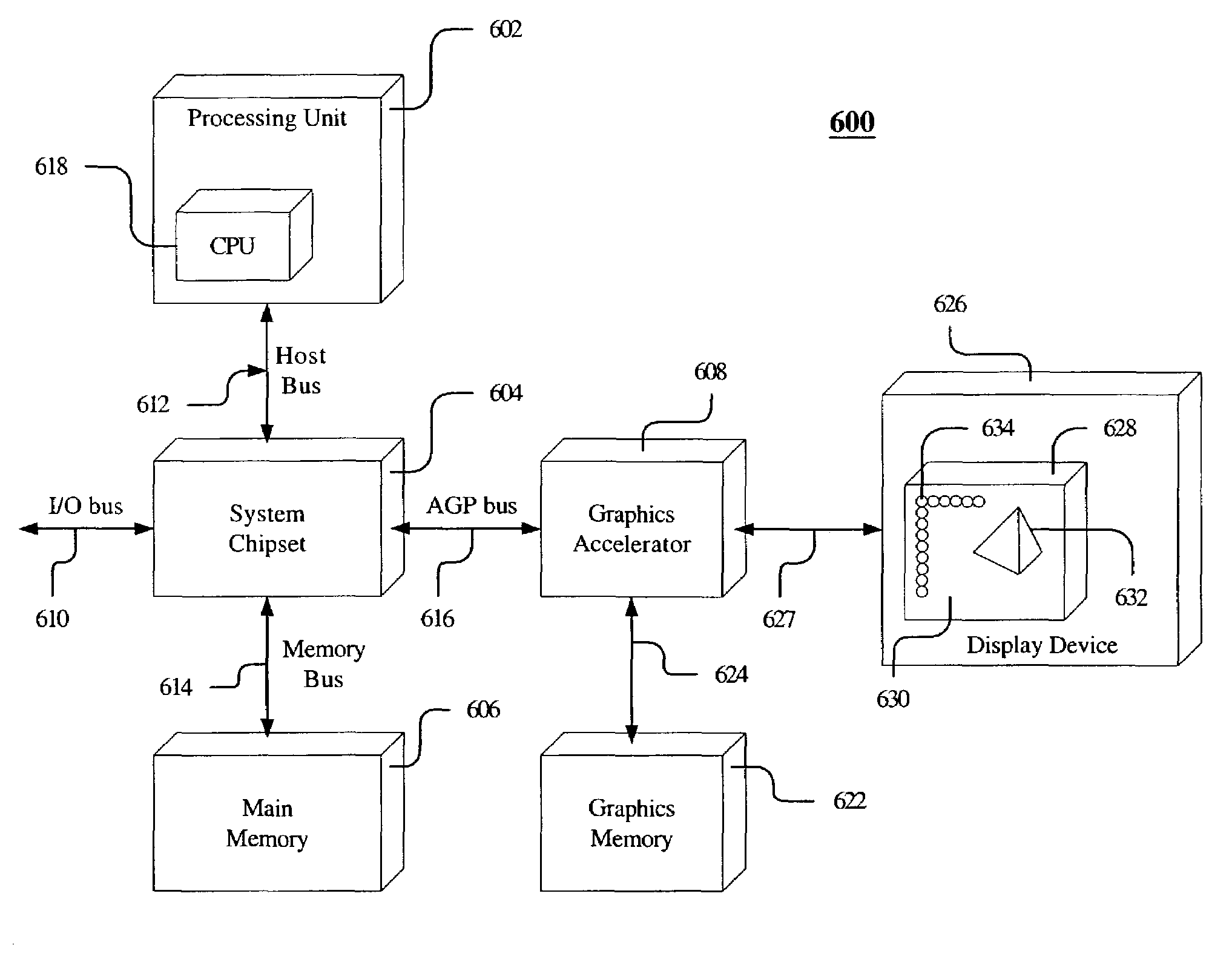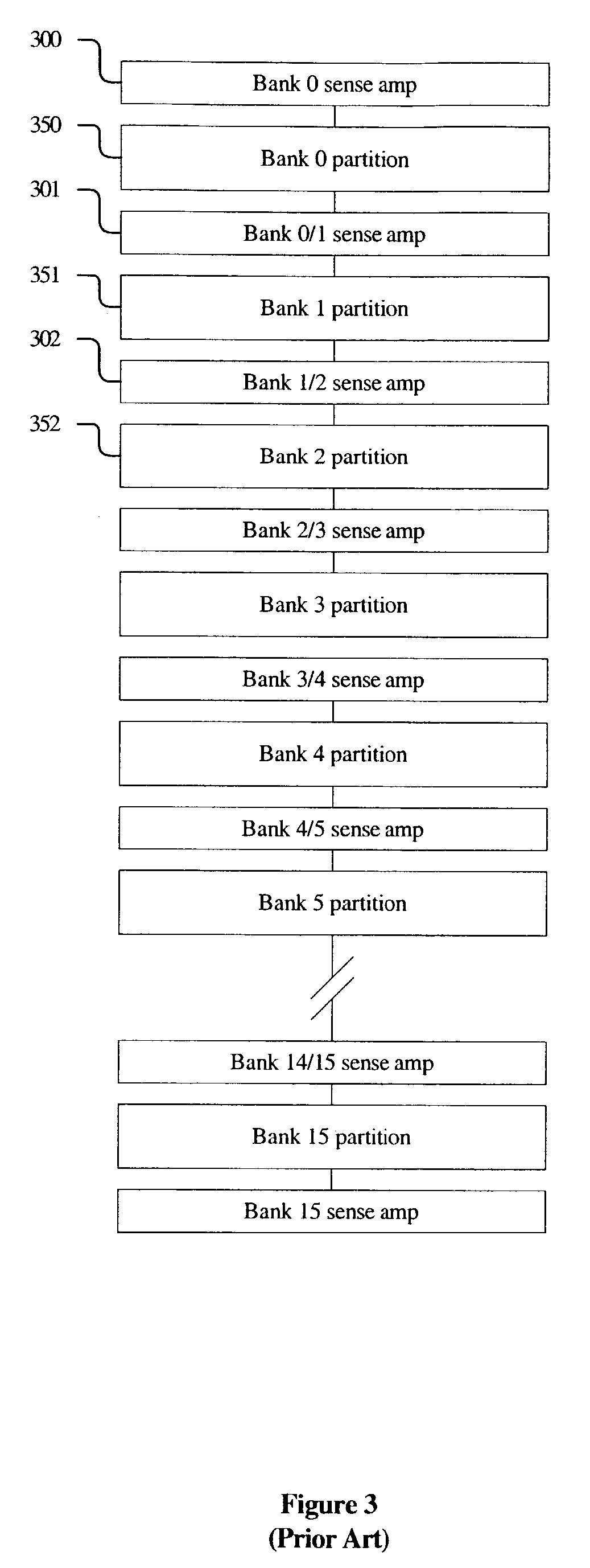Efficient hardware A-buffer using three-dimensional allocation of fragment memory
a fragment memory and hardware a buffer technology, applied in the field of graphics accelerators, can solve problems such as imposing the rectangle size to be too small, and achieve the effects of reducing memory requirements, promoting effective prefetching of fragment information, and amortizing allocation and deallocation overhead
- Summary
- Abstract
- Description
- Claims
- Application Information
AI Technical Summary
Benefits of technology
Problems solved by technology
Method used
Image
Examples
Embodiment Construction
System Overview
[0073]FIG. 6 shows a computer system 600 embodying the principles of the invention. The system 600 can generate monochrome or multicolor 2-D and 3-D graphic images for rendering on a display device. In the computer system 600, a system chip set 604 provides an interface among a processing unit 602, a main memory 606, a graphics accelerator 608, and devices (not shown) on an I / O bus 610. The processing unit 602 is coupled to the system chip set 604 by the host bus 612 and includes a central processing unit (CPU) 618. The main memory 606 interfaces to the system chip set 604 by memory bus 614.
[0074]The graphics accelerator 608 is coupled to the system chip set 604 by an AGP bus 616, to a graphics memory 622 by a bus 624, and to a display device 626 by a bus 627. The display device626 includes a raster display monitor 628 for rendering color images on, for example, a display surface or screen 630. The invention can also be practiced with a monochrome monitor that display...
PUM
 Login to View More
Login to View More Abstract
Description
Claims
Application Information
 Login to View More
Login to View More - R&D
- Intellectual Property
- Life Sciences
- Materials
- Tech Scout
- Unparalleled Data Quality
- Higher Quality Content
- 60% Fewer Hallucinations
Browse by: Latest US Patents, China's latest patents, Technical Efficacy Thesaurus, Application Domain, Technology Topic, Popular Technical Reports.
© 2025 PatSnap. All rights reserved.Legal|Privacy policy|Modern Slavery Act Transparency Statement|Sitemap|About US| Contact US: help@patsnap.com



